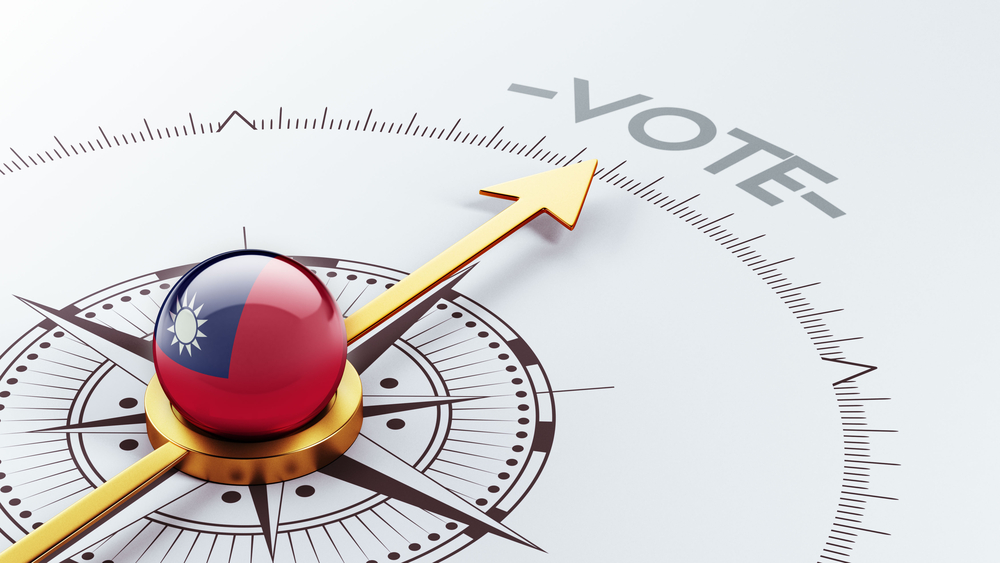Taiwan’s Political Future Up for Grabs Next Month

Please note that we are not authorised to provide any investment advice. The content on this page is for information purposes only.
The political contest between the Kuomintang (KMT) and the Democratic Progressive Party (DPP) for the January 2016 presidential and legislative elections dominated Taiwan’s 2015. Since 2008, President Ma Ying-jeou’s China-friendly policies have increasingly linked Taiwan’s economic wellbeing and socio-political concerns to the question of whether further economic integration is beneficial to Taiwan and, more broadly, the future of Taiwan as an independent sovereign state.
The political contest between the Kuomintang (KMT) and the Democratic Progressive Party (DPP) for the January 2016 presidential and legislative elections dominated Taiwan’s 2015. Since 2008, President Ma Ying-jeou’s China-friendly policies have increasingly linked Taiwan’s economic wellbeing and socio-political concerns to the question of whether further economic integration is beneficial to Taiwan and, more broadly, the future of Taiwan as an independent sovereign state.
Despite a major political realignment in 2014 — which saw the KMT suffer its worse electoral results in the ‘nine-in-one local elections’, and mass demonstrations rejecting closer ties to China — the KMT did little to adjust. In 2015, a majority of Taiwanese people continued to reject policies viewed as coercing Taiwan’s political and national identity to suit the Chinese Communist Party.
In July, echoing the concerns of the March 2014 Sunflower Movement, hundreds of students and their supporters staged a weeklong sit-in in the education ministry. The protestors demanded the resignation of the minister and the reversal of government-backed revisions to the country’s school curriculum and textbooks. These changes included altering the phrase ‘Japanese rule’ to ‘Japanese colonial rule’, and referring to Chiang Kai-shek’s military dictatorship as a ‘glorious retrocession’. The protesters claimed that the changes would indoctrinate young Taiwanese to support unification with China, degrade the influence of Japan in Taiwan’s modernisation and purposely ignore the brutality of Chiang’s regime.
Despite continuing backlash, the KMT chose a conservative pro-China presidential candidate, Hung Hsiu-chu. She remarked that the KMT principle of ‘one China, different interpretations’ should be revised to ‘one China, same interpretation’. She controversially advocated for the need to reach a peace accord with China — that is, unification as opposed to maintaining the status quo. Hung also compared Taiwanese activists to members of Mao Zedong’s Red Guards.
Inevitably, polling for the KMT and Hung plummeted to a 15.5 percent approval rating — even below that of a minor party candidate, the People First Party’s James Soong. After calls for her to quit the presidential race, including from within her own party, the more moderate Eric Chu replaced Hung in October.
On the back of the mistakes of Ma’s administration, the Tsai Ingwen-led DPP has made major inroads. In her failed 2012 presidential bid, Tsai was criticised for her cross-Strait policy due to fears it would alienate both the mainland and the United States. In response, Tsai adopted a pragmatic attitude towards keeping the current pace of China–Taiwan relations — a far cry from the former DPP President Chen Shui-bian’s vocal calls for de jure independence. Tsai’s campaign success is arguably mostly due to the KMT’s failings. The KMT has fatally linked Taiwan’s future too closely to that of China’s and failed to consider the Taiwanese people’s desire and right for self-determination.
Answering to previous criticism that she was part of the political elite and had little understanding of the concerns of ordinary citizens and minorities, Tsai has also outlined significant social and judicial reforms. These policies address key issues such as inter-generational disparity, the lack of government transparency, constitutional changes to the legislature and judicial system, reconciliation with Taiwan’s indigenous population and lessening the ideological divide between the Pan-Blue and Pan-Green political coalitions. Interestingly, her running mate, Chen Chien-jen, is a Catholic — one of less than 5 percent of Taiwanese who identify as Christian.
However, such reforms are easier said than done. The January 2016 battle for control of the legislature will determine whether Tsai’s reforms can be brought to fruition. And any presidential hopeful would have to face the more long-term problem of how to inject new energy into Taiwan’s stagnated economy.
Taiwan’s annual GDP growth for 2015–2019 is predicted to be just 2 percent. Both the KMT and DPP are aware of the challenges of weakening external demands for Taiwan’s exports and Taiwan’s struggling domestic market. Although Taiwan’s export-driven market would benefit from cuts in tariffs in the Chinese market, what it needs most is an end to its political isolation. Taiwan is currently unable to sign other bilateral agreements or participate in international organisations without offending China.
In November, Chinese President Xi Jinping met with President Ma in Singapore in the first-ever, meeting between the leaders of the two countries. While this meeting was significant in signalling a new Chinese approach to managing cross-Strait relations, two key dynamics remain entrenched that will continue to hamper changes to the cross-Strait status quo.
First, Taiwan’s socio-political trends indicate that more and more people identify as solely Taiwanese. Any administration now faces a growing civil society and youth movement who will bring with them a very different attitude to cross-Strait relations. It will be increasingly difficult for any Taiwanese leader to balance the growing desire of most Taiwanese to become independent with maintaining the cross-Strait status quo.
Second, the United States remains committed to its (informal) security guarantee of Taiwan. There are reports that a new US$1 billion arms deal is currently being prepared. The geostrategic location of Taiwan is as significant to China as it is to the United States. For ideological reasons, any US government would face enormous pressure to defend democratic Taiwan against a revisionist, authoritarian China — not doing so would be a political nightmare.
Regardless the outcome of the election, how Taiwan manages these ongoing challenges will determine the country’s prospects in 2016 and beyond.
Troubled times ahead for Taiwan? is republished with permission from East Asia Forum




